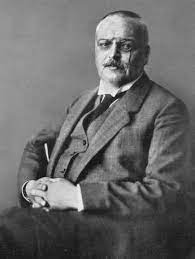A Journey Through the History of Alzheimer’s Disease
Alzheimer’s disease, a name now synonymous with challenges in memory and cognitive function, has a history that stretches back more than a century. The story begins with a German psychiatrist and neuropathologist named Dr. Alois Alzheimer, who, in 1906, presented a case that would leave an indelible mark on the understanding of dementia.
The concerned family of a 51 year old woman requested his help. The woman was having memory problems. She was also beginning to have problems with understanding the words when people were talking to her and increased difficulty speaking.
He accepted her as his patient and she lived at the asylum for the next four years until her death. Her condition steadily deteriorated. The confusion increased and she became very suspicious and agitated.
As the disease progressed she began to wander around aimlessly and would scream when bedridden. She eventually became incontinent and was completely unaware of her surroundings.
Her symptoms progressed rapidly and she died in 1905. Dr. Alzheimer was intrigued by this strange illness. He performed an autopsy and discovered brain shrinkage, fatty deposits, dead brain cells, and abnormal deposits in and around cells. He discovered the neurofibrillary tangles and senile plaques which are now the defining characteristics of Alzheimers Disease. He published his findings in 1907 and this new disease was named after him.

Early Chapters:
Dr. Alois Alzheimer’s Discovery (1906)
In the early 20th century, Dr. Alzheimer was studying a patient named Auguste Deter, whose symptoms included memory loss, language problems, and unpredictable behavior.
He accepted her as his patient and she lived at the asylum for the next four years until her death. Her condition steadily deteriorated. The confusion increased and she became very suspicious and agitate. As the disease progressed she began to wander around aimlessly and would scream when bedridden. She eventually became incontinent and was completely unaware of her surroundings.
Dr. Alzheimer was intrigued by this strange illness. After Auguste’s death, Dr. Alzheimer examined her brain and found abnormal clumps and tangled bundles of fibers—now recognized as the hallmark signs of Alzheimer’s disease. This groundbreaking discovery laid the foundation for future research and understanding.


Middle Chapters:
Advancements in Research and Terminology (1970s – 1980s)
In the following decades, researchers delved deeper into the intricacies of Alzheimer’s. The introduction of neuroimaging techniques and the identification of specific brain changes solidified Alzheimer’s as a distinct form of dementia. The term “Alzheimer’s disease” became widely accepted, separating it from other forms of cognitive decline
Recent Chapters:
Unraveling the Genetic Code and Therapeutic Advances (1990s – Present)
Advancements in genetic research in the late 20th century unveiled specific genes linked to familial Alzheimer’s disease, offering insights into the role of genetics in the development of the condition. As the 21st century unfolded, the search for effective treatments intensified.
While a cure remains elusive, there have been strides in medications aimed at managing symptoms and improving quality of life for those affected.


A Global Challenge and Hope for the Future
Today, Alzheimer’s stands as a global health challenge. The World Health Organization recognizes it as a public health priority, emphasizing the need for increased awareness, research, and support for affected individuals and their families. Organizations worldwide are tirelessly working towards a better understanding of the disease, seeking innovative approaches to treatment and prevention.
The story of Alzheimer’s disease is a tapestry woven with scientific discoveries, medical breakthroughs, and the unwavering dedication of researchers, caregivers, and advocates. As we turn the pages of time, there’s hope that continued research and collective efforts will bring us closer to unraveling the mysteries of Alzheimer’s and ultimately finding a way to prevent, treat, or even cure this complex condition. The journey continues, filled with challenges, but also with the promise of a brighter, more informed future.
Video by Cédric Bibix Barbier
ALZHEIMER’S FACTS AND FIGURES
Over 6 million people are living in America with Alzheimer’s Disease
Fourteen million Americans will have Alzheimer’s Disease by the middle of this century unless a cure or prevention is found.
It is estimated that more than 47 million individuals worldwide who have Alzheimer’s Disease.
This number will almost double every 20 years, reaching 70 million in 2030 and 131.5 million in 2050
Someone in the world develops dementia every 3 seconds.
One in 10 persons over 65 and nearly half of those over 85 have Alzheimer’s disease.
2/3 of the people affected are women.
A small percentage of people in their thirties, forties, and fifties have early onset.
A person with this disease lives an average of 8 years after diagnosis and as many as 20.
At any given time, 7 out of 10 persons with this disease live at home.
It is the 6th leading cause of death in the United States.
1 IN 3 SENIORS DIES WITH ALZHEIMER’S OR ANOTHER DEMENTIA. IT KILLS MORE THAN BREAST CANCER AND PROSTATE CANCER COMBINED
Hi, I'm Larea, I am a Registered Nurse specializing in Dementia Care, with 30 years of experience supporting dementia patients and their families. Over the years, I have provided care in diverse settings, including homes, hospitals, nursing homes, assisted living facilities, and hospice. My passion is guiding caregivers, sharing my knowledge and experience to help them navigate the challenges of dementia care with confidence and compassion.
